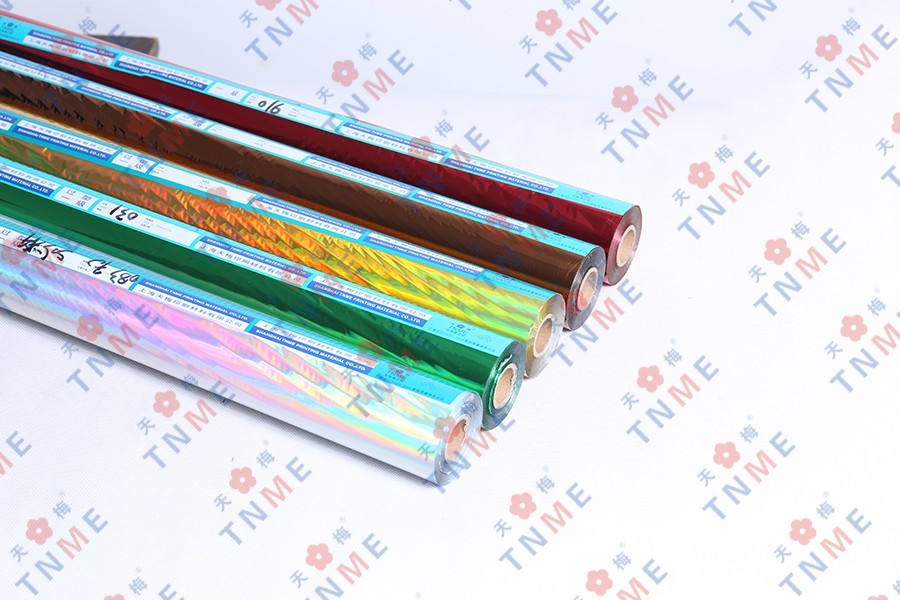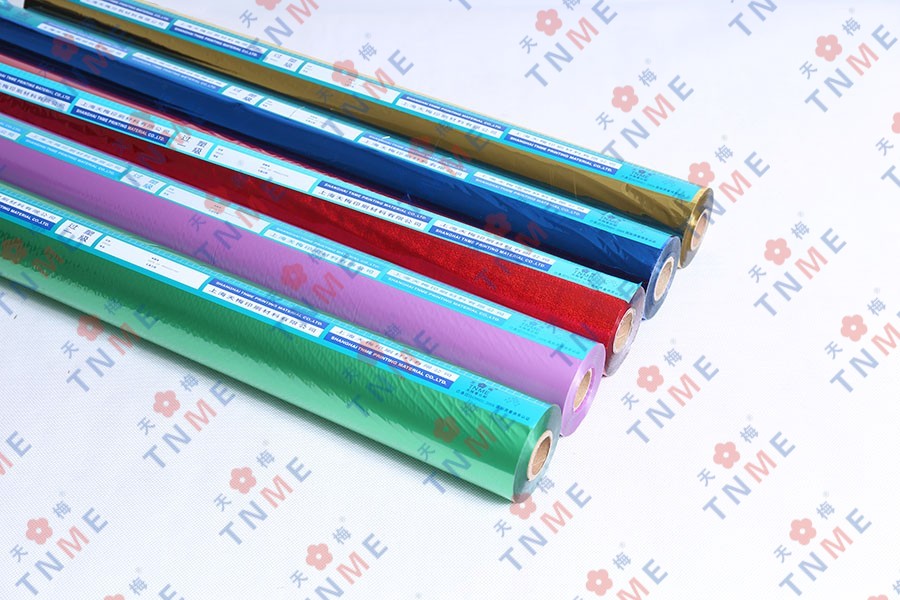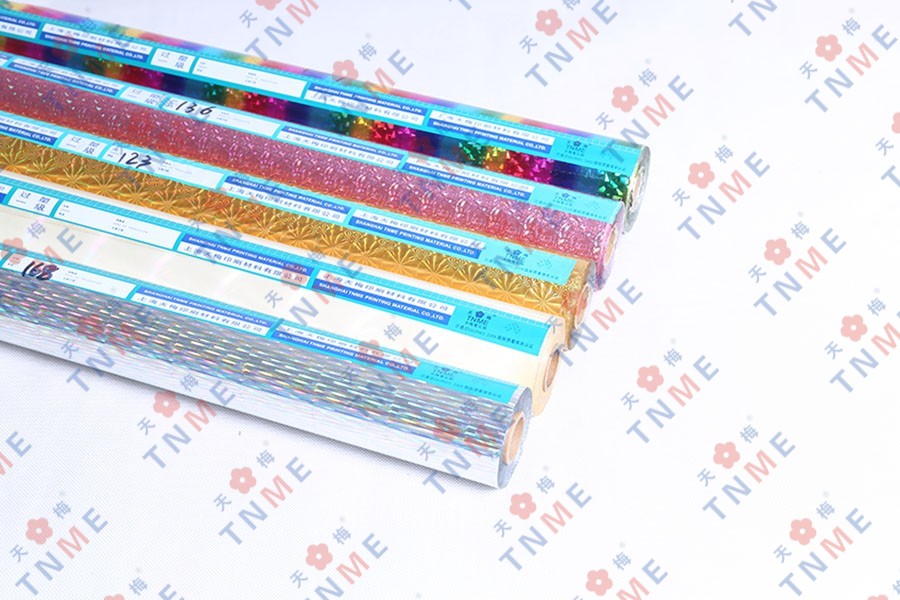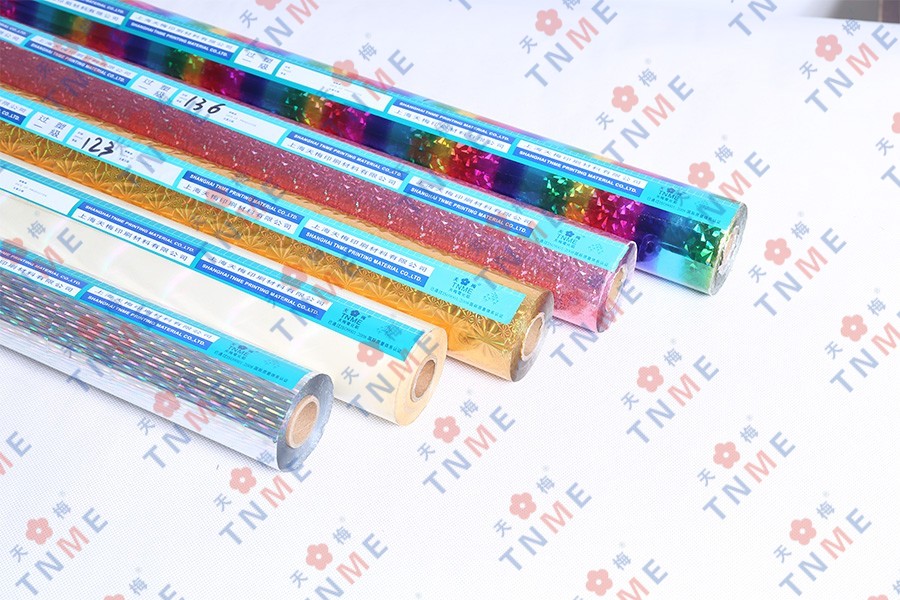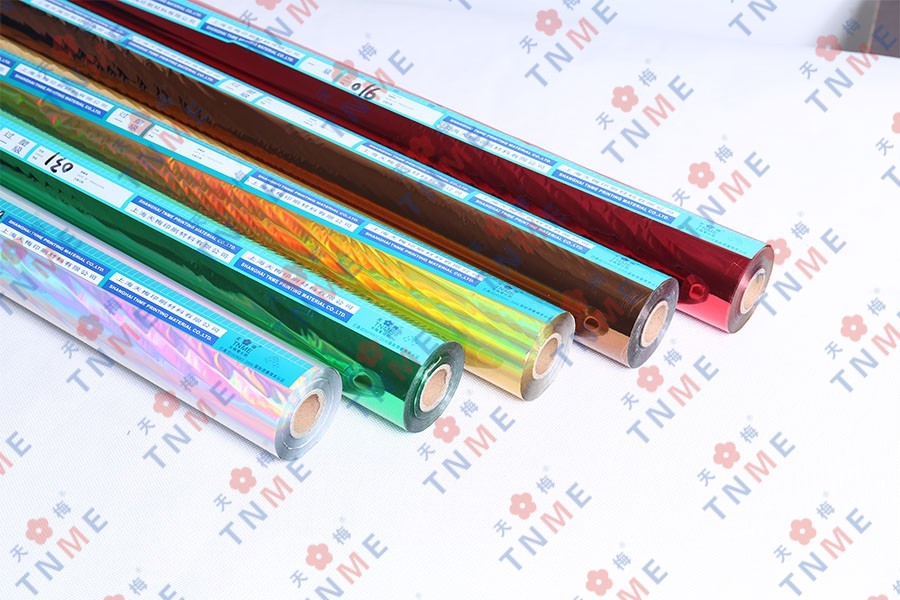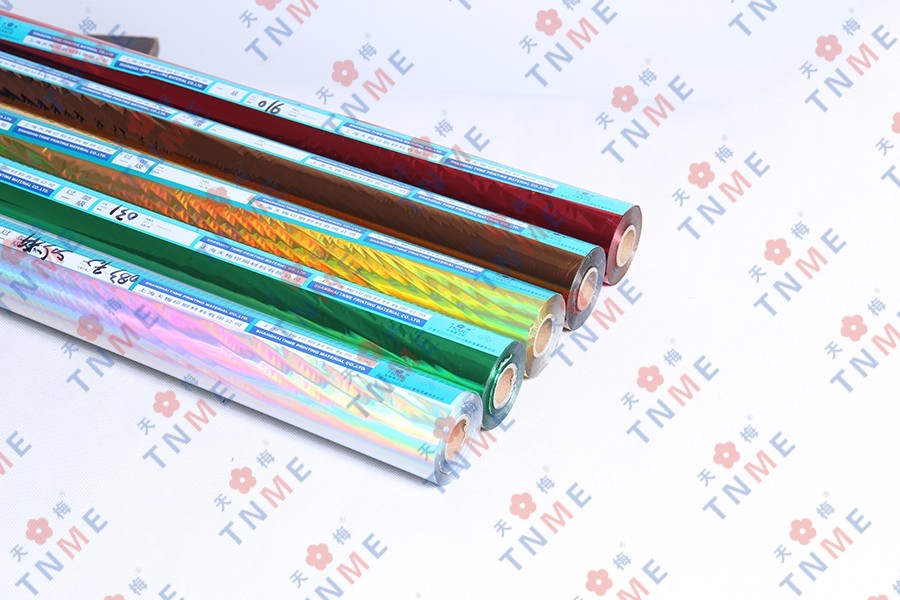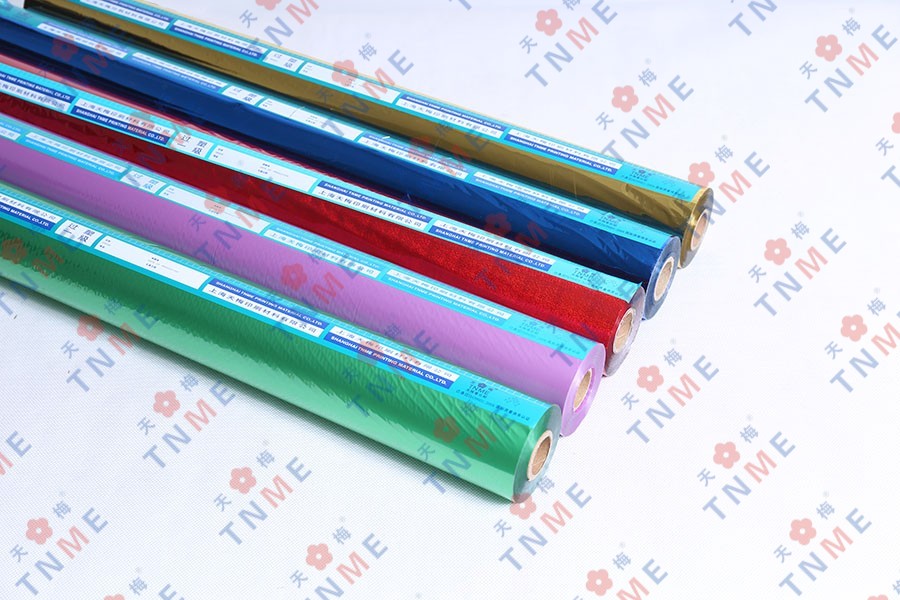What Are Laser & Holographic Foils Made Of? (A Look at the Substrate and Layer Structure)
In the world of visual appeal and brand enhancement, few materials capture attention quite like laser & holographic foil. These materials are ubiquitous, found elevating the perceived value of product packaging, securing important documents, and adding a dynamic aesthetic to graphic design projects. While the end result is a brilliant, light-diffracting spectacle, the true magic lies in the sophisticated, multi-layered construction of the foil itself. To truly appreciate its capabilities and applications, one must look beyond the surface sparkle and understand its fundamental composition.
The Foundation: Understanding the Substrate
Before examining the functional layers, it is essential to understand the base upon which they are built: the substrate. This component serves as the physical carrier for the entire structure, providing the necessary strength, stability, and release properties for the foil to function effectively. The choice of substrate is a critical first step in the manufacturing process, influencing the foil’s handling, durability, and compatibility with different application processes.
The most commonly used substrate for laser & holographic foil is a form of plastic film, typically polyester. Polyester films are favored for their exceptional tensile strength, dimensional stability, and resistance to heat and moisture. These properties are non-negotiable. During the manufacturing process, the film is subjected to high temperatures and tensions as it moves through coating and embossing machinery. Its dimensional stability ensures that the intricate holographic pattern remains consistent and does not distort. Furthermore, the heat resistance is vital for withstanding the temperatures involved in subsequent processes, such as the application of various coatings and, ultimately, during the hot stamping process where the foil is transferred to its final surface.
While polyester is the industry standard, other substrate materials are used for specialized applications. For instance, certain cold transfer foils may utilize different polymer films or even paper carriers designed to release their layers under pressure alone, without the need for heat. The thickness of the substrate is also a key variable, typically measured in microns. A thicker film may offer better handling and durability for complex stamping jobs, while a thinner one might be chosen for cost-effectiveness or specific high-speed application requirements. In essence, the substrate is the unsung hero of the laser & holographic foil—a robust and reliable backbone that supports the complex, delicate layers responsible for its visual properties.
Deconstructing the Multi-Layer Structure
The transformative properties of laser & holographic foil are not the product of a single material but rather the result of a precisely engineered, multi-layer sandwich. Each layer has a distinct and critical function, working in concert to create, protect, and ultimately release the holographic image. The structure is a marvel of material science, built up through successive coating processes in a controlled, clean-room environment. The following table outlines the core layers and their primary purposes, which will be explored in detail in the subsequent sections.
| Layer Name | Primary Function |
|---|---|
| Release Layer | Allows the other functional layers to cleanly separate from the substrate during application. |
| Lacquer Layer | Provides a receptive surface for the embossed pattern and adds durability. |
| Embossed Layer | The heart of the effect; a micro-structured surface that diffracts light to create the holographic or laser image. |
| Reflective Layer | A thin metal or pigment coating that reflects light, making the embossed pattern visible. |
| Adhesive Layer | Bonds the entire structure to the target material (e.g., paper, plastic, fabric) during application. |
The Release Layer: The Key to Clean Transfer
Sitting directly on top of the substrate is the release layer. This is a crucial, though often overlooked, component that enables the entire technology to work. Its function is precisely what its name implies: to release. This ultra-thin coating is designed to break down under specific conditions—typically the combination of heat and pressure from a hot stamping die—allowing the functional layers above it to cleanly and completely detach from the substrate film.
The chemistry of the release layer is finely tuned. It must have a strong enough bond to the substrate to survive the rigors of manufacturing, shipping, and handling. However, its bond to the lacquer layer above must be weaker and precisely calibrated to fail at the target application temperature. When the heated die presses the laser & holographic foil onto the target surface, the release layer at the point of contact vaporizes or softens, severing the connection. This allows the lacquer, embossed, reflective, and adhesive layers to transfer as a unified, ultra-thin film onto the product. A poorly formulated release layer can lead to incomplete transfers, a “ghosted” image, or a rough, gritty texture, compromising the quality and aesthetic of the final product. Therefore, the reliability of the hot stamping foil process is fundamentally dependent on the performance of this layer.
The Lacquer Layer: The Foundation for Embossing
Above the release layer lies the lacquer layer, which serves multiple vital functions. Primarily, it acts as the receptive and stable foundation for the embossed holographic pattern. This layer is typically a radiation-cured coating, such as an acrylic polymer, that is applied in a liquid state and then cured using ultraviolet (UV) light. In its uncured state, it is soft and pliable, allowing it to perfectly receive the micro-impression of the shim during the embossing process.
Once the pattern is embossed, the lacquer is immediately cured. This “freezes” the pattern in place, giving it permanent structural integrity. Beyond this primary role, the lacquer layer also contributes to the durability and performance of the final transferred image. It protects the delicate embossed structure from mechanical abrasion and chemical attack. In many laser & holographic foil products, the lacquer layer is also the carrier of color. By incorporating transparent dyes or pigments into the lacquer, manufacturers can create a vast array of colored holographic effects, where the holographic pattern is seen in a specific hue, such as gold, red, or blue. This layer essentially defines the environmental resilience and part of the visual character of the foil.
The Embossed Layer: The Heart of the Holographic Effect
The embossed layer is the very core of what makes laser & holographic foil unique. This is not a separate applied layer of material, but rather a micro-topographical pattern permanently formed into the surface of the lacquer layer. The process involves using a specialized tool called a shim. A shim is a nickel cylinder or plate that has been electroformed to carry the exact negative of the desired holographic or diffraction pattern on its surface. This pattern is comprised of millions of microscopic grooves, pits, and lines, often with features smaller than the wavelength of visible light.
During manufacturing, the shim is pressed against the soft, uncured lacquer layer with immense pressure. This impresses the nano-scale pattern into the lacquer. When this embossed surface is later coated with a reflective material and struck by light, the microscopic structures cause the light to diffract and interfere. This phenomenon of diffraction is what breaks white light into its constituent spectral colors, while the specific arrangement of the grooves controls the direction and movement of the light, creating the illusion of depth, motion, and three-dimensionality associated with a hologram, or the brilliant, sharp beams of light in a diffraction grating pattern. The precision and complexity of this embossed layer are what differentiate a simple metallic foil from a true laser & holographic foil, and it is the primary driver of its optical performance and visual impact.
The Reflective Layer: Making the Pattern Visible
An embossed pattern on a transparent lacquer layer is, by itself, nearly invisible to the naked eye. To make the holographic image clearly visible, it must be given the ability to reflect light. This is the sole purpose of the reflective layer. This is an extremely thin coating, typically only a few tens of nanometers thick, applied directly on top of the embossed lacquer. The most common material used is aluminum, which is vaporized in a vacuum chamber and deposited onto the embossed surface. Aluminum provides a highly reflective, mirror-like background that effectively bounces light back through the embossed structures, making the diffracted image bright and vibrant.
However, the reflective layer is not limited to metallic aluminum. To achieve different aesthetic effects, other materials can be used. For instance, a transparent high-refractive-index material like zinc sulfide can be used to create a semi-transparent holographic or demetallized foil effect. In this case, the foil has a pearlescent or translucent appearance, allowing the underlying color of the printed material to show through while still displaying the holographic pattern. Furthermore, dielectric thin films can be used to create specific color-shift effects, where the observed color changes dramatically with the viewing angle. The choice of material for the reflective layer is a key factor in determining the final visual character of the laser & holographic foil, moving it from a simple bright silver to a wide spectrum of sophisticated optical effects.
The Adhesive Layer: The Final Bond
The outermost layer of the laser & holographic foil structure is the adhesive. This thermally activated layer is the final piece of the puzzle, responsible for creating a permanent bond between the foil and the target substrate—whether it is paper, cardboard, plastic, leather, or another material. During the hot stamping process, the heat from the die activates the adhesive layer, causing it to become tacky. The simultaneous pressure then forces the activated adhesive into intimate contact with the surface of the target material, creating a strong bond as it cools.
The formulation of the adhesive is critically important and is often tailored for specific applications. An adhesive designed for paper may not adhere properly to certain plastics, which can have low surface energy. Therefore, manufacturers produce laser & holographic foil with adhesives engineered for different families of materials. Key considerations for the adhesive include its activation temperature, its bonding strength (tack), and its final resistance to environmental factors like humidity, heat, and solvents. A correctly formulated adhesive ensures that the brilliant holographic image remains firmly attached to the product for its entire lifecycle, maintaining the integrity and premium quality of the branded item or secure document.
Variations in Composition for Specific Effects
The standard five-layer structure provides a reliable blueprint, but the true versatility of laser & holographic foil emerges when this formula is modified to achieve specific visual or functional outcomes. By altering the materials within the layers, or occasionally omitting one, manufacturers can create a diverse portfolio of effects that cater to different design and security needs.
One of the most common variations is the demetallized foil. This effect is achieved by applying the standard aluminum reflective layer but then using a patterned printing process to remove specific areas of the metal. This is done chemically, leaving behind a holographic pattern that is only partially reflective. The result is a complex image where shiny, metallic holographic elements coexist with transparent, non-metallic areas. This technique is widely used for creating intricate, high-security patterns on labels and documents, as it is very difficult to reproduce with standard printing equipment. It allows for the integration of a hologram with other printed information, creating a layered visual security feature.
Another significant variation involves the replacement of the aluminum reflective layer with a pigmented or colored layer. In a pigmented foil, the reflective metal layer is omitted entirely. Instead, the embossed lacquer layer is coated with a layer of opaque colorant. The result is a foil with a matte or satin finish that displays the holographic pattern in a single, solid color. This provides a more subtle, yet still visually striking, aesthetic that is popular in premium branding and packaging where a subdued luxury is desired. Conversely, by combining a translucent color in the lacquer layer with a thin, semi-transparent reflective layer, manufacturers can create rich, deep tonal effects that are impossible to achieve with standard printing inks. These variations demonstrate that the composition of laser & holographic foil is a flexible platform for innovation, capable of producing a wide spectrum from glaringly bright to subtly sophisticated visual finishes.




 English
English 中文简体
中文简体
